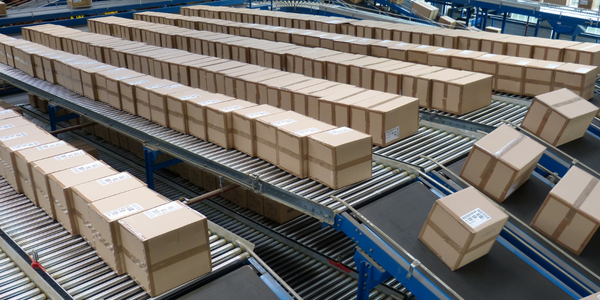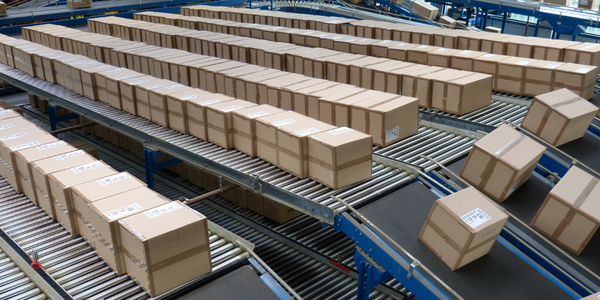Applicable Industries
- Packaging
- Retail
Applicable Functions
- Product Research & Development
- Sales & Marketing
Use Cases
- Time Sensitive Networking
About The Customer
Biscuiteers is a high-end biscuit empire founded by Harriet Hastings and her husband Stevie Congdon. The company was launched in 2007 with £80,000 from savings, and it quickly took off, receiving orders from big brands like Anya Hindmarch, Burberry, and Mulberry. The company now has two shops in London and has expanded to the US. Biscuiteers' products are hand-iced biscuits with popular designs, and they have a wide range of corporate clients, including FTSE 100 firms and fashion houses. The company has also been backed by a £1.25 million crowdfunding campaign and £750,000 private investment.
The Challenge
Harriet Hastings, the founder of Biscuiteers, saw the potential in launching an ecommerce gifting business for biscuits while on holiday in New York. She had a vision of creating a product that was easily postable, had a longer shelf-life, and offered limitless design opportunities for corporate clients. However, she faced several challenges. One of the early challenges was ensuring the biscuits could be sent by post without breaking. Another challenge was managing the growing business as it generated sales from multiple platforms. Hastings realized that she needed to completely reconfigure the business and needed a software program that could pull all these strands together and help her to keep a close eye on stock and orders.
The Solution
To overcome these challenges, Biscuiteers brought in Brightpearl, a back-office system that helped them run the business more efficiently. A clever solution was found for the problem of biscuits breaking during delivery by gluing the biscuits to the tin with food-safe paper, so they remained static and unbroken on delivery. With the back-office functions operating efficiently with the successful implementation of Brightpearl, sales surged forward further. The company also launched an app and boosted Christmas sales with a TV campaign. With the heightened efficiency aided by Brightpearl, they have been able to invest further in the business to prepare for the next period of growth on the international stage.
Operational Impact
Quantitative Benefit

Case Study missing?
Start adding your own!
Register with your work email and create a new case study profile for your business.
Related Case Studies.

Case Study
Improving Production Line Efficiency with Ethernet Micro RTU Controller
Moxa was asked to provide a connectivity solution for one of the world's leading cosmetics companies. This multinational corporation, with retail presence in 130 countries, 23 global braches, and over 66,000 employees, sought to improve the efficiency of their production process by migrating from manual monitoring to an automatic productivity monitoring system. The production line was being monitored by ABB Real-TPI, a factory information system that offers data collection and analysis to improve plant efficiency. Due to software limitations, the customer needed an OPC server and a corresponding I/O solution to collect data from additional sensor devices for the Real-TPI system. The goal is to enable the factory information system to more thoroughly collect data from every corner of the production line. This will improve its ability to measure Overall Equipment Effectiveness (OEE) and translate into increased production efficiencies. System Requirements • Instant status updates while still consuming minimal bandwidth to relieve strain on limited factory networks • Interoperable with ABB Real-TPI • Small form factor appropriate for deployment where space is scarce • Remote software management and configuration to simplify operations

Case Study
Digital Retail Security Solutions
Sennco wanted to help its retail customers increase sales and profits by developing an innovative alarm system as opposed to conventional connected alarms that are permanently tethered to display products. These traditional security systems were cumbersome and intrusive to the customer shopping experience. Additionally, they provided no useful data or analytics.

Case Study
How Sirqul’s IoT Platform is Crafting Carrefour’s New In-Store Experiences
Carrefour Taiwan’s goal is to be completely digital by end of 2018. Out-dated manual methods for analysis and assumptions limited Carrefour’s ability to change the customer experience and were void of real-time decision-making capabilities. Rather than relying solely on sales data, assumptions, and disparate systems, Carrefour Taiwan’s CEO led an initiative to find a connected IoT solution that could give the team the ability to make real-time changes and more informed decisions. Prior to implementing, Carrefour struggled to address their conversion rates and did not have the proper insights into the customer decision-making process nor how to make an immediate impact without losing customer confidence.

Case Study
IoT Data Analytics Case Study - Packaging Films Manufacturer
The company manufactures packaging films on made to order or configure to order basis. Every order has a different set of requirements from the product characteristics perspective and hence requires machine’s settings to be adjusted accordingly. If the film quality does not meet the required standards, the degraded quality impacts customer delivery causes customer dissatisfaction and results in lower margins. The biggest challenge was to identify the real root cause and devise a remedy for that.

Case Study
Zenon the Ideal Basis for An Ergonomic HMI
KHS develops and produces machines and equipment for filling and packaging in the drinks industry. Because drinks manufacturing, filling and packaging consist of a number of highly complex processes, the user-friendly and intuitive operation of equipment is increasingly gaining in significance. In order to design these processes as simple as possible for the user, KHS decided to introduce a uniform, transparent and standardized solution to the company. The HMI interface should meet the requirement for people with different qualifications and enable them to work on a standard platform.








